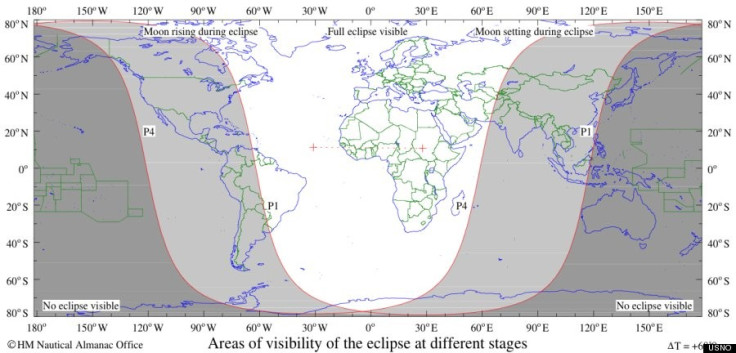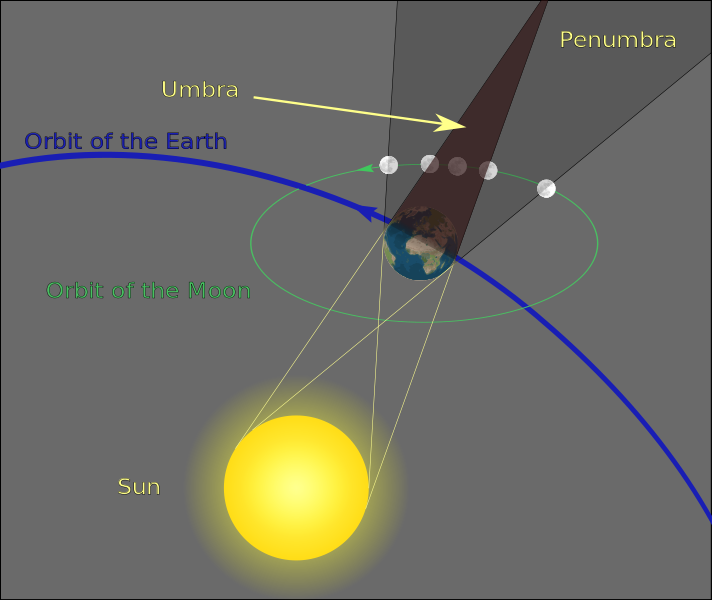Penumbral Lunar Eclipse 2013: Sun and Earth to Align to Cast Moon into Shadows

The final penumbral lunar eclipse this year is set to take place on 18 October when the moon will appear much dimmer and redder than normal.
The lunar eclipse will be visible to people living in Europe, Africa, the Americas and parts of Asia just before midnight GMT.
A penumbral lunar eclipse is when the moon passes through Earth's shadow - the penumbra is the wider region where only a portion of light source is obscured by the planet.
It only occurs when the moon passes directly behind Earth into its shadow, leaving all three celestial bodies aligned. The lunar eclipse will be visible for several hours.

Stargazers in Europe look set to get the best view of the eclipse as it will occur when the night sky is at its darkest.
During a penumbral eclipse, the moon appears darker and redder because the sun's light is being filtered through the Earth's atmosphere, which eliminates much of the 'blue light'.
Writing for Sky and Telescope magazine, Alan MacRobert said: "On the evening of Friday, October 18th, the full Moon will glide across the pale outer fringe (penumbra) of Earth's shadow.
"Unusual shading on the southern half of the Moon should be fairly plain. Look for the penumbral shadow to move from (celestial) east to west across the disc. You might be able to detect lesser traces of penumbral shading for about 45 minutes before and after mid-eclipse."

This penumbral lunar eclipse will be the last one of the year. The next will not take place until April 2014.
According to Universe Today, photographers can capture the eclipse to show how much dimmer the moon appears with before and after shots: "Be sure to use identical exposure settings to catch this effect. Locations where the moon rides high in the sky also stand the best chance of imaging the faint penumbral shading, as the Moon will be above the discolouring effects of the thicker air mass low to the horizon.
"The moon reaches descending node along the ecliptic about 20 hours after the end of the eclipse, and reaches apogee just over six days later on 25 October. The October Full Moon is also known as the Hunter's Moon, providing a bit of extra illumination on the fall hunt."
Read more:
Penumbral Lunar Eclipse 2013: Where to Watch the Moon in Earth's Shadow
© Copyright IBTimes 2025. All rights reserved.





















